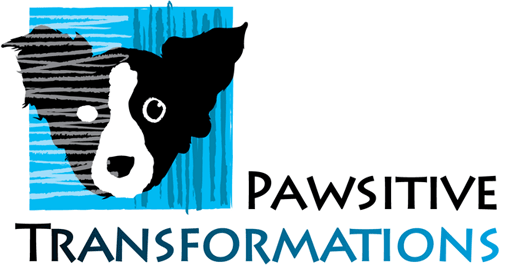The term “positive training” has a couple meanings, and it’s worth understanding the nuances. Most people understand it first in the sense that “positive” suggests “desirable,” as in “we had a positive experience.” It suggests something we’d be glad to have more of; something we’d look forward to doing again. It’s quite correct to think of positive training that way.
Positive trainers use games to help a dog (or cat, bird, rabbit, rat, lizard…) have fun while learning new activities like walking nicely on leash (yes, rabbits and lizards can do this), coming when called (yep, lizards and cats alike will come a-runnin’), or running obstacle courses (I’ve taught chickens to jump through hoops, climb ladders and go down a slide). I’m currently following a friend on FB who’s training a goat to perform in a Broadway play. A dog, a kid, or any critter that has fun and wins prizes for learning new skills will be an eager student and a satisfying companion. In this sense interpret positive to mean “pleasant.” The opposite would be “aversive” or “painful.”
There’s also a more technical meaning to the term “positive.” In behavior science, positive reinforcement means adding something to the student’s experience as a consequence of a specific action. The dog sits and receives a food treat. The dog is now +1 in the treat column. Any behavior (sitting, coming closer, performing on Broadway) that results in getting something desirable is more likely to happen again. This is called positive reinforcement. Positive refers to the fact that we’ve added something to the equation (a treat, warm praise). Reinforcement refers to the behavior becoming more frequent, more likely. In this sense, interpret positive to mean “addition. The opposite would be subtraction, taking something away.
The most important thing to know about positive training comes from where the scientific and emotional meanings meet. More and more, training professionals understand that very reliable and agreeable behavior can be taught using all positive methods. There is NEVER a need to use aversive, painful methods in training. If a dog is doing something we don’t like (say chewing an expensive shoe), the solution is to teach a more desirable behavior (chewing a food toy) and keeping temptations (shoes) out of reach. The best we can hope for using aversive (punishment) based training is to temporarily suppress problem behaviors, but there are always side effects. Punishment causes more problems than it solves.
So when you’re teaching your pet, reach for the good stuff. Food treats, praise, clipping a leash for “walkies” once your dog is sitting nicely – all of these rewards will help your pet enjoy learning from and being with you. You’ll both have a positive experience in more ways than one!
Bob Ryder, CSAT, PMCT-4, CPDT-KA
